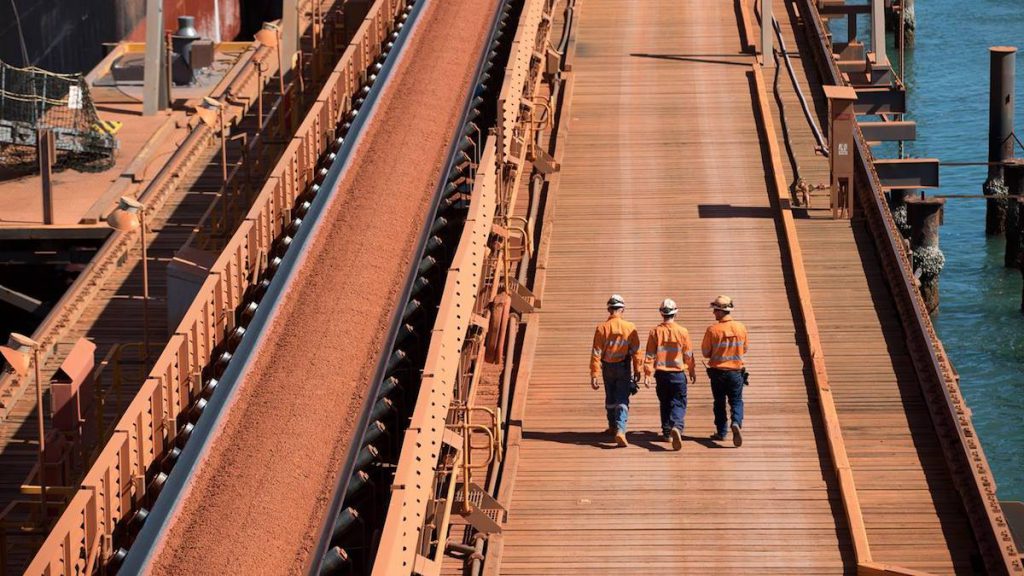
Rio Tinto Group, the world’s biggest iron ore miner, reported its highest-ever interim profit and will pay $9.1 billion in dividends as the company and its global rivals cash in on this year’s commodities rally.
Rio is the first of the majors to post earnings, kicking off a reporting season that’s expected to see record results across the board. The industry has been one of the biggest beneficiaries from the world’s efforts to emerge from the pandemic. The trillions of dollars poured into recovery packages have ignited demand for commodities like iron ore and copper, driving prices sharply higher and sending inflation pressures rippling through the global economy.
Related Story: Rio Tinto’s lithium market entry likely only start of battery metals ambitions
Wednesday’s results are also the first period under the leadership of new Chief Executive Officer Jakob Stausholm, who was appointed after Jean-Sebastien Jacques left the company because of a backlash over Rio’s destruction of an ancient Aboriginal site last year. The surge in commodity prices means the new boss comes in on a high note for Rio, even as the company grapples with a slew of production setbacks that have dogged its operations in recent years.
Disruptions caused by covid, and especially the company’s ability to move workers to its sites, added to existing problems in the first half, especially around the development of a copper project in Mongolia and at its key profit-driving iron ore mines in Western Australia. Rio’s copper business has also seen production fall as covid takes its toll.
Trillions of dollars poured into recovery packages have ignited demand for commodities like iron ore and copper, driving prices sharply higher
“In the first half we experienced too much operation instability. We have to sharpen the consistency of our performance,” the CEO said on a media call. “While today’s results clearly demonstrate the underlying quality of our asset base, our operational performance clearly is not where it has been in the past or where we want it to be.”
Stausholm also sounded a cautious note on the outlook for commodities demand in top consumer China.
“The long-term potential for China is still intact but we probably have seen a non-sustainable high level of industrial development in some of the months in the first half of this year,” he said on a call with reporters.
Midday Wednesday, Rio Tinto’s stock was up 3% on the NYSE. The company has a $138 billion market capitalization.
The company reported first-half underlying earnings more than doubled to $12.2 billion from the same period last year as prices for iron ore and copper surged. The half-year payout — which includes a special dividend of $3 billion — is more than the mining giant returned to shareholders for the whole of 2020 and higher than analysts forecast.
While Rio’s paying out record amounts to shareholders, the company signaled this week it’s also keen to invest in growing production in key commodities — particularly those that will benefit from the world’s shift toward green energy.
The company announced Tuesday it plans to spend $2.4 billion building a lithium mine in Serbia. While it’s the first big move by a mining major into lithium, used in rechargeable batteries, the investment reflects an ongoing push by the world’s biggest mining companies into “future facing” commodities like battery metals or fertilizer, at the same time that the industry is moving to get out of fossil fuels.
“Rio appears to be shifting from austerity and capital returns to more of a focus on growth,” Jefferies analyst Christopher LaFemina wrote in a note. “While Rio had some operational issues in the period, the big picture here is that these are stellar financial results.”
(By Thomas Biesheuvel and James Thornhill)
Comments